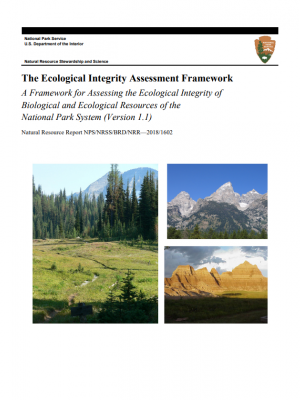 The purpose of this document is to present a replicable model for mangrove ecosystem management based on collaborative planning efforts in the mangrove forests of the Ramsar designated Alvarado Lagoon System (ALS), Veracruz, Mexico. The specific objectives were to (i) engage stakeholders in ecosystem assessment activities and management planning; (ii) integrate both ecological and economic measures for valuing and enhancing the resilience of mangrove forest natural capital and its underlying biodiversity and; (iii) produce a replicable mangrove ecosystem management model which can be applied elsewhere in Latin America and the Caribbean.
The purpose of this document is to present a replicable model for mangrove ecosystem management based on collaborative planning efforts in the mangrove forests of the Ramsar designated Alvarado Lagoon System (ALS), Veracruz, Mexico. The specific objectives were to (i) engage stakeholders in ecosystem assessment activities and management planning; (ii) integrate both ecological and economic measures for valuing and enhancing the resilience of mangrove forest natural capital and its underlying biodiversity and; (iii) produce a replicable mangrove ecosystem management model which can be applied elsewhere in Latin America and the Caribbean.
The project was funded by the Inter-American Development bank (IDB) in support of the IDB Country Strategy with Mexico, which includes reducing vulnerability and enhancing adaptation to climate change and improving conservation and sustainable use of ecosystem services. This strategy is aligned with the Convention on Biological Diversity’s (CBD) Strategic Plan for Biodiversity (2011-2020) and Aichi Biodiversity Targets, which emphasize the participation of indigenous communities as an essential component for the conservation of ecosystems and associated livelihoods (Target 14). Broad goals of this project included supporting the government of Mexico in the implementation of its National Biodiversity Strategy (CONABIO 2000), and efforts to develop a program of long term, systematic monitoring of mangroves in Mexico, along with Mexico’s National Climate Change Strategy and sustainable forestry goals.
This guide presents the results of collaborative management planning with La Mojarra, an approximately 130 member community within the Poza Honda Ejido in the ALS. Planning efforts were a collaboration among three NGO’s: NatureServe, the hub of the 86 member NatureServe network connecting science with conservation, Pronatura Veracruz, a non-profit organization that for 12 years has blended scientific research and community sustainability to restore and manage mangroves in the ALS; and Conservation Strategy Fund an international NGO sustaining natural ecosystems and human communities through conservation economics. The project consisted of four components conducted between February 2017 and October 2018, and building off of Pronatura Veracruz’s decade of work with communities in the ALS. The components were:
- Stakeholder engagement and assessment using participatory appraisal methods
- Assessment of mangrove ecological condition within La Mojarra in the context of the ALS
- Socioeconomic & socioecological assessment of mangrove with participatory activities
- Workshop with stakeholders to develop a collective vision for future sustainable mangrove use and incorporate that vision in a management plan
We share methods used in our collaborative planning with the community of La Mojarra and other stakeholders in the ALS system in an effort to present a replicable model for efforts to develop mangrove management plans with local stakeholders that can be applied with other communities in Latin America and the Caribbean.